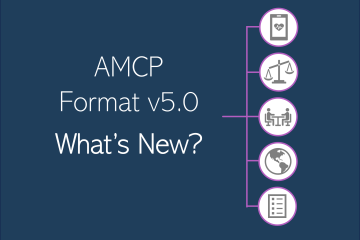Author: Lisa Baker, PhD
At the close of this year’s ISMPP meeting in Washington DC (April 28-May 1), and as I departed for Atlanta to attend ISPOR (May 5-8), I took the chance to reflect on new insights and strategies to support publication planning in the HEOR space.
At ISMPP, there were many fascinating conversations, one of which came at a roundtable I led on Monday April 29, “How will increased use of real-world evidence by regulators influence medical publications?” We discussed the pivotal 2022 HARPER (HARmonized Protocol template to Enhance Reproducibility) publication.1
HARmonized Protocol Template to Enhance Reproducibility of hypothesis evaluating real-world evidence studies on treatment effects
Authored by Shirley Wang and stakeholders from ISPOR, ISPE, regulatory agencies, HTA organizations, industry, and academia
HARPER aimed to harmonize 4 earlier guidances on the conduct of RWE studies: the EMA PASS template, ISPE’s guidelines for good pharmacoepidemiology practice, the NEST protocol guidance, and STaRT-RWE. After careful evaluation in multiple use cases, the resulting HARPER guidance lays out in exquisite detail the parameters that should be defined when designing protocols for RWE studies that make secondary use of RWD, evaluate a hypothesis, and are intended to inform healthcare decision making.1
What really struck me, though, was how the HARPER guidelines provide a template for reporting the findings of RWE studies in publications. To me, Appendix 4 of the HARPER publication creates the outline of a Methods section:1
- Study design (including a diagram)
- Setting
- Definition of Time 0 (index date) and other primary time anchors
- Inclusion criteria
- Exclusion criteria
- Variables, including definitions of
- Exposure
- Outcome
- Follow up
- Covariates (confounding variables and effect modifiers, e.g. risk factors, comorbidities, comedications)
- Data analysis
- Primary, secondary, and subgroup analysis specification
- Sensitivity analyses
- Data sources
Appendix 4 can guide the writer in teasing out key details to report for each of these topics. For example (in section 7.3.1), in reporting the definition of Time 0 (index date), the writer can seek out and report information on1
- whether the criterion for entry reflects an incident or prevalent condition,
- what clinical code (eg, ICD10 code) was used to define Time 0,
- whether there was a washout window prior to entry, and
- whether patients are allowed to enter the study population only once or multiple times.
In other words, HARPER can guide the writer to know which questions are important to ask and which details are important to report when developing RWE studies into publications. I’ll be looking at the HARPER guidance carefully the next time I write up a RWE study for publication!

References
- Wang SV, Pottegård A, Crown W, Arlett P, Ashcroft DM, Benchimol EI, et al. HARmonized Protocol Template to Enhance Reproducibility of Hypothesis Evaluating Real-World Evidence Studies on Treatment Effects: A Good Practices Report of a Joint ISPE/ISPOR Task Force. Value Health. 2022;25(10):1663-1672.
Lisa Baker is a freelance medical writer, member of the MedCommsTech Medical Writers Collective, and owner of HEORpubs. The opinions expressed in this article are the author’s own and have not been reviewed or endorsed by ISMPP or the authors of HARPER.

